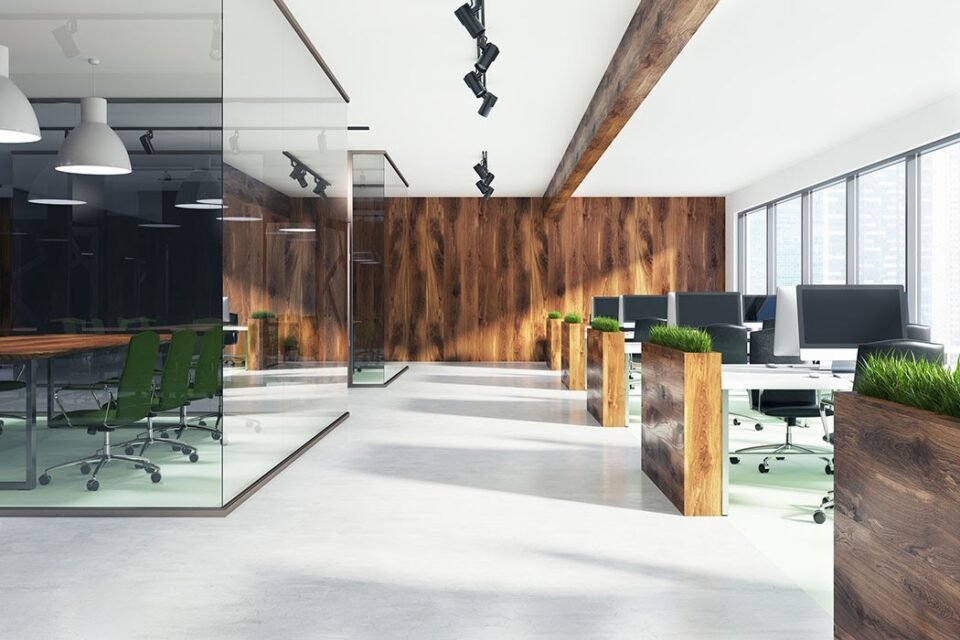In the dynamic realm of modern architecture, staying abreast of the latest design trends is essential for creating commercial spaces that resonate with functionality and aesthetics. From sustainable practices and innovative facades to cutting-edge technology integration, architects are continuously pushing the boundaries of creativity and efficiency. This exploration delves into the top 10 design trends shaping the landscape of contemporary commercial buildings, offering insights into the evolving principles that define the spaces where businesses thrive.
1. Sustainable Architecture
Commercial architects in Colorado and numerous other populous regions are stressing the use of environmentally friendly products and energy-saving technologies. Architects employ advanced techniques to reduce the environmental impact of structures, integrating elements such as green roofs and rainwater harvesting systems. The focus is on minimizing carbon footprint, enhancing energy efficiency, and promoting responsible resource use. In addition to helping to preserve the environment, sustainable buildings also help businesses save money over the long term by using less energy and maintaining their assets.
2. Biophilic Design
Biophilic design principles have gained significant traction in modern commercial architecture. Architects and designers are integrating natural elements into building interiors, incorporating features like ample natural light, indoor plants, and green walls. This design approach aims to establish a profound connection between occupants and nature, enhancing productivity and well-being. By introducing these organic elements, commercial spaces become more visually appealing and create a healthier indoor environment.
3. Flexible Spaces
Flexible spaces in modern commercial buildings are designed with adaptability in mind, employing strategies such as movable partitions and modular furniture. This approach allows businesses to transform their interiors according to evolving needs, accommodating various functions and activities. Open layouts and versatile designs promote collaboration among employees and provide an environment conducive to creativity and teamwork. These areas increase a company’s total productivity by establishing an environment that is conducive to innovation.
4. Smart Technology Integration
In the realm of modern commercial architecture, smart technology integration has become paramount. Architects are incorporating advanced HVAC systems, intelligent lighting controls, and occupancy sensors to optimize energy usage and enhance occupant comfort. These technologies enable real-time monitoring and adjustments, ensuring efficient building management. Additionally, state-of-the-art access control and surveillance systems bolster security measures, offering businesses a heightened level of protection.
5. Wellness-Centric Spaces
Architects are increasingly focusing on wellness-centric spaces within commercial buildings. Through the use of fitness facilities, leisure areas, and ergonomic workstations, these places place a high priority on the health and well-being of their users. A comfortable and productive atmosphere is ensured by careful consideration of the acoustics and indoor air quality. By integrating biophilic elements such as indoor plants and natural light, architects create environments that reduce stress and enhance overall occupant wellness.
6. Creative Facades
Architects are increasingly exploring innovative facade designs, employing dynamic materials, textures, and patterns to enhance the visual aesthetics of modern commercial buildings. These architects utilize their expertise to create facades that not only captivate the eye but also reflect the unique identity of the businesses within. By integrating local elements and cultural nuances, architects ensure that the facade not only meets functional requirements but also resonates with the surrounding environment.
7. Adaptive Reuse
A sustainable strategy that is gaining popularity in contemporary design is adaptive reuse. Architects and developers repurpose existing structures, breathing new life into old warehouses, factories, and historical buildings. This method not only preserves the cultural and historical heritage of a place but also minimizes the environmental impact associated with new constructions. By creatively redesigning these spaces, architects transform them into vibrant commercial hubs, such as offices, restaurants, or retail outlets, preserving the charm of the past while meeting the demands of contemporary business.
8. Inclusive Design
In the realm of modern commercial architecture, inclusive design has become a pivotal focus. Architects prioritize accessibility, incorporating features such as ramps, elevators, and wide doorways to ensure ease of movement for individuals with disabilities. Inclusive restrooms and workstations are meticulously designed to accommodate diverse needs, fostering an environment where everyone, regardless of physical abilities, can navigate and work comfortably. By embracing these universal design principles, architects create spaces that not only meet regulatory requirements but also promote a sense of belonging and equality among all occupants.
9. Emphasis on Local Culture
Architects designing modern commercial buildings are embracing an emphasis on local culture by incorporating indigenous elements into their projects. From using traditional building materials sourced locally to integrating cultural motifs and architectural styles unique to the region, these architects pay homage to the heritage of the area. By infusing the essence of local culture into the building design, commercial spaces become more than just structures; they become a part of the community’s identity.
10. Data-Driven Design
Data-driven design has revolutionized the way architects approach commercial building projects. By harnessing data analytics, architects can gain valuable insights into user behavior, occupancy patterns, and environmental factors. This information enables them to optimize building layouts and systems, ensuring efficient use of space and resources. Moreover, architects can enhance user experience by tailoring designs based on real-time feedback, ultimately creating spaces that are not only visually appealing but also functionally superior.
Conclusion
Incorporating these design trends into your commercial projects promises not only visually appealing spaces but also environments that enhance productivity and well-being. By embracing sustainable architecture, flexible interiors, and cutting-edge technology, you ensure your building remains efficient and adaptable to future needs. Integrating nature, fostering inclusivity, and utilizing data-driven methodologies reflect a forward-thinking approach. Embracing these trends positions you at the forefront of modern architecture, creating spaces that inspire, engage, and stand the test of time.
Sources
https://f9productions.com/commercial-architecture/
https://wbwood.com/top-10-interior-office-design-trends-in-2023/


